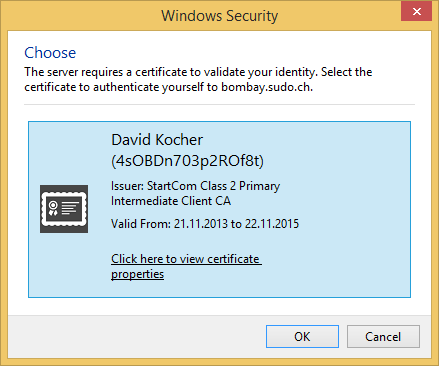FTP & FTP-TLS

Providers
Settings are specific to service providers. Use the provided connection profiles.
Note
Connection profiles can be installed from Preferences → Profiles.
SFTP To Go - FTP with explicit TLS
FTP Connect Mode
Choose between an Active (PORT) or Passive (PASV) connect mode per bookmark or when opening a new connection. The default setting can be set in the System Preferences in Network → Advanced… → Proxies → Use Passive FTP Mode (PASV).
Character Encoding
The character encoding used to parse directory listings can be set as a per bookmark setting. If special characters such as Umlaute aren’t displayed correctly in the browser, try to change the character encoding used. To change the character encoding for the current browser, use View → Text Encoding. The setting is also available per bookmark. Try UTF-8 (the default), ISO-8859-1 and Windows-1252.
TLS Connections (FTPS)
FTP with explicit TLS is supported. Interoperable with TLSv1.2. Implicit FTPS with no negotiation is deprecated and not supported. FTPS should not be confused with the SSH File Transfer Protocol (SFTP).
TLSv1 and TLSv1.1 deprecation
TLSv1 and TLSv1.1 are no longer supported as of
Mutual TLS
Mutual (two-way) TLS with a client certificate for authentication is supported. When a server requests a client certificate for authentication, a prompt is displayed to choose a certificate with a private key that matches the given issuer name requested from the server. Matching certificates are searched for in the Keychain on macOS or the Windows Certificate Manager respectively.

Switch to Secure Connection
If you attempt to connect to a server using FTP without TLS transport security but the server advertises support for TLS (as a response to FEAT), a prompt is displayed to secure the connection.

You can always switch back to FTP without TLS transport security by changing the protocol selection in the bookmark to FTP (File Transfer Protocol).
Trust Certificate
If the certificate is not trusted by the system, you are asked to make an exception if you still want to connect to the site that cannot be verified. This failure during certificate trust verification is most often the case when the certificate is invalid either
Because the hostname does not match the common name in the certificate. You will get the error message
You might be connecting to a server that is pretending to be….The certificate is self signed or signed by a root authority not trusted in the system.
The certificate is expired.
You can temporarily or permanently allow to connect nevertheless by choosing Continue. To remember your choice, select Always Trust….
Distribution (CDN)
You can enable custom origin Amazon CloudFront (Content Delivery Network) distribution using File → Info → Distribution (CDN).
Remote Commands
Use Go → Send Command… to open a command input window for the current browser.
Connected to a FTP server this allows to send arbitrary command not available through the user interface of the browser. Possibly these are extensions to the standard FTP protocol your server may support you can invoke with the SITE prefix. Type SITE HELP for supported commands.
Server Compatibility
ProFTPd
You need to have the option set
TLSOptions NoSessionReuseRequiredfor FTP-TLS connections (Issue #5087). If configuring the server is not an option, users should switch back to plain FTP connections. Choose FTP (File Transfer Protocol) in the bookmark protocol setting. Most users hit by this compatibility issue have been asked to secure the connection because support for TLS was detected upon negogiating the connection.
Example configuration:
TLSOptions
The NoSessionReuseRequired option has been added. As of
ProFTPD 1.3.3rc1, mod_tls only accepts SSL/TLS data connections
that reuse the SSL session of the control connection, as a security
measure. Unfortunately, there are some clients (e.g. curl) which
do not reuse SSL sessions.
To relax the requirement that the SSL session from the control
connection be reused for data connections, use the following in the
proftpd.conf:
<IfModule mod_tls.c>
...
TLSOptions NoSessionReuseRequired
...
</IfModule>
vsFTPd
The option
require_ssl_reuse=NOmust be set for FTP-TLS connections (Issue #5087).
Preferences
FTP → Text Encoding
The text encoding selected is used to decode the filenames in a directory listing sent by the server. It is important this matches the text encoding used by the server to encode the characters as otherwise characters not in the ASCII range (such as German Umlaute) are not displayed correctly. UTF-8 (the default), ISO-8859-1 and Windows-1252 are the most common. You can also change the text encoding per browser using View → Text Encoding.
Default Protocol Handler
You can set Cyberduck or a third party application as the default application (protocol handler) for FTP in Preferences → FTP. When you click URLs in another application like your web browser, this application is opened to open the URL instead.
Reset Windows FTP Protocol Registration
This has been fixed in Cyberduck 7.3.0. Cyberduck has overwritten the default Windows FTP protocol integration through Internet Explorer. This effectively disabled the Windows “Add Network location” for FTP-protocol. To reset this back to default you have to run following Registry-file which will reset the FTP-protocol registration back to default.
ftp-default.reg| This has been tested for Windows 10 1909 only. This may or may not work for previous versions of Windows.
Applying Registry-files is not riskless and should be avoided if not necessary. Alternatively, you may apply following sequence to get the FTP-protocol handler definitions for your operating system version:
Create a Virtual Machine for your platform
Open RegEdit, navigate to HKCR\ftp
Open the context menu for the ftp-key, select Export
Import previously exported Registry-file on your PC
Delete the Virtual Machine
Known Issues
Modification Date
Requires server-side support for MFMT or UTIME extensions.
Maximum Number of Connections
Many servers limit the number of allowed connections with an error message like 530 Sorry, the maximum number of clients (10) from your host are already connected.. Because FTP is a stateful protocol it requires opening separate connections when transferring files in parallel. Refer to limit the number of connections allowed for the file transfers.
Error Opening Data Socket
For data transfers and possibly file listings (depending on the features supported by the server), a second data connection must be opened using PASV or PORT commands which is referred to as a passive or active data connection.
Depending on the firewall and router configuration in your network there may be errors reported:
Failure opening active data socket reports
I won't open a connection to xxx.xxx.xx.xx (only to xxx.xx.xxx.x)
It is not Possible to Change Permissions
The error message FTP Error: SITE not understood or similar is displayed. The server does not support this feature (which is an optional extension to the FTP protocol) and can not be used.
Listing Directory Fails or Shows no Content
Various options are available to adjust the usage of different directory listing commands (LIST, STAT and MLSD). Directory listings are requested using STAT, MLSD, LIST -a and LIST commands in that order. If a failure is detected (because the server may not support the command), the next option is tried. Because this can be fuzzy logic, it may still be that Cyberduck does not correctly fall back to a supported list command. You may then try to force the use of a given command.
To disable STAT for directory listings, change the hidden configuration option as follows:
ftp.command.stat=false
To disable LIST -a for directory listings, open a Terminal.app window and enter
ftp.command.lista=false
To disable MLSD for directory listings, open a Terminal.app window and enter
ftp.command.mlsd=false
Restart Cyberduck.
Alternatively, you can use one of the connection profiles below for which the mentioned directory listing commands are already disabled.
Downloadthe FTP (Compatibility Mode) Connection Profile or install it from Preferences… → Profiles for preconfigured settings.Downloadthe FTP-SSL (Compatibility Mode) Connection Profile or install it from Preferences… → Profiles for preconfigured settings.
Note
Connection profiles are available through the Preferences → Profiles tab.
Interoperability with ASUS Routers
Asus Routers are incapable of performing basic STAT-requests. This is in direct violation of RFC9591 which states that STAT should behave like LIST when a path name is given - which is not the case.
Because of this, the usage of the FTP (Compatibility Mode) Connection Profile is mandatory to get proper access to drives connected to an ASUS Router.
File Locks With vsFTPd
Set the property lock_upload_files=NO in vsftpd_conf.